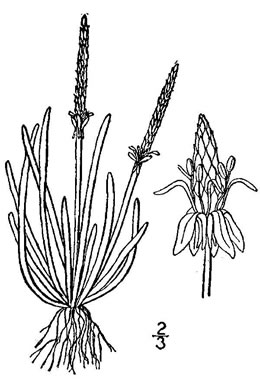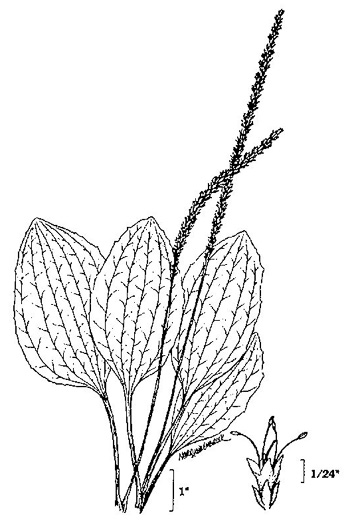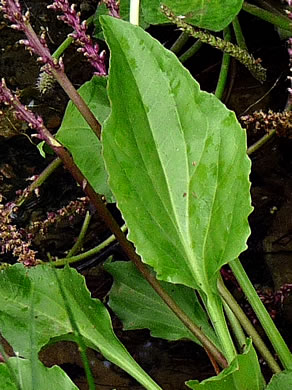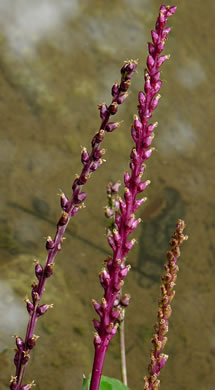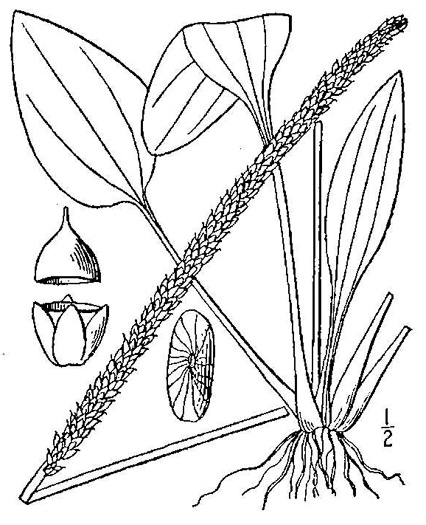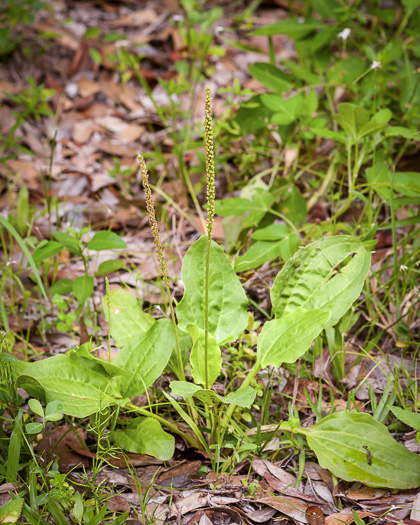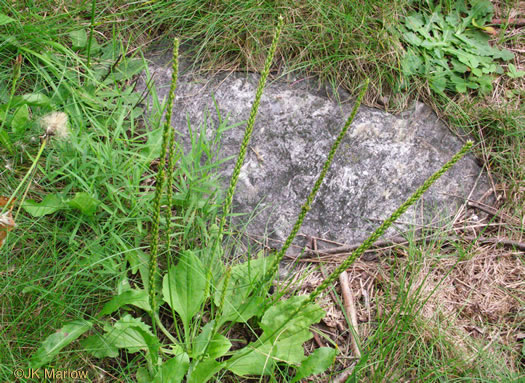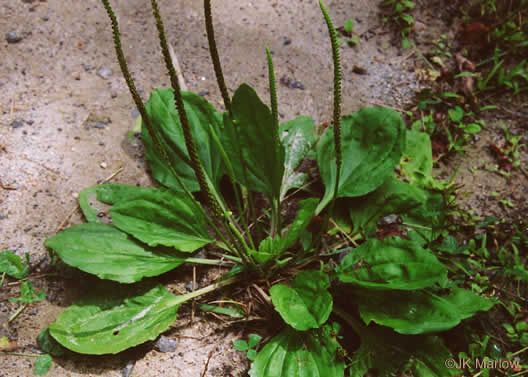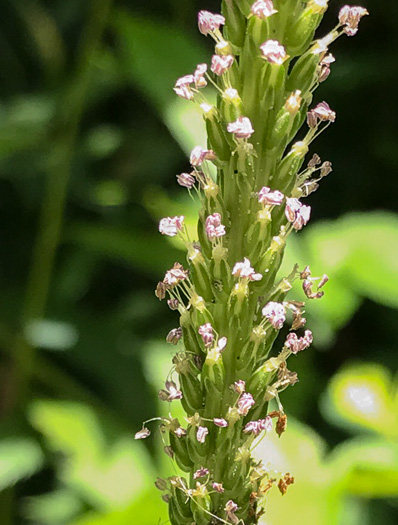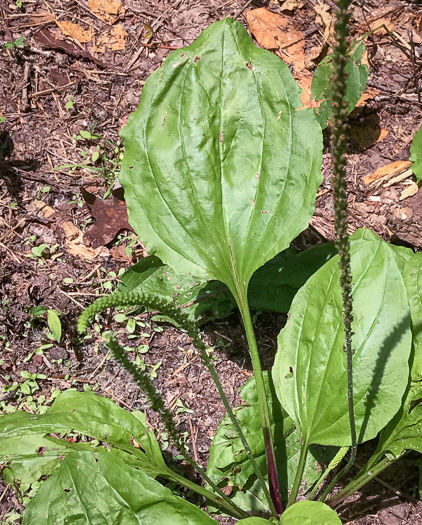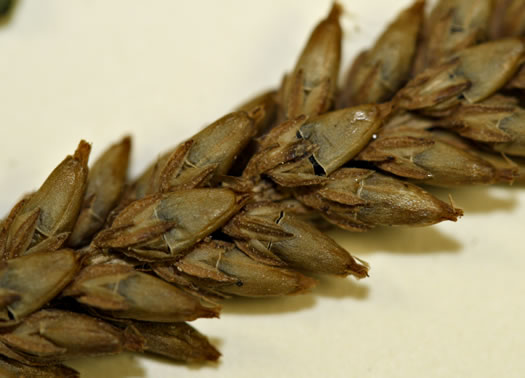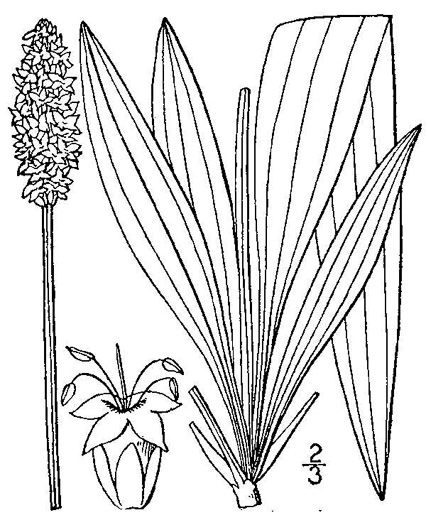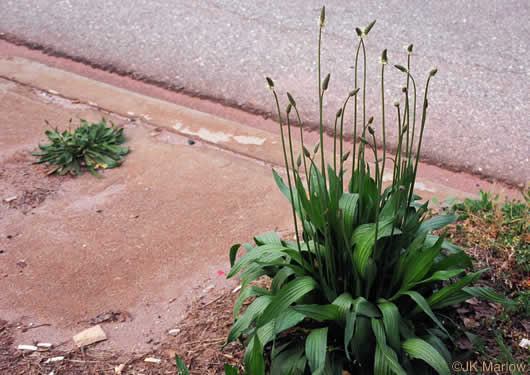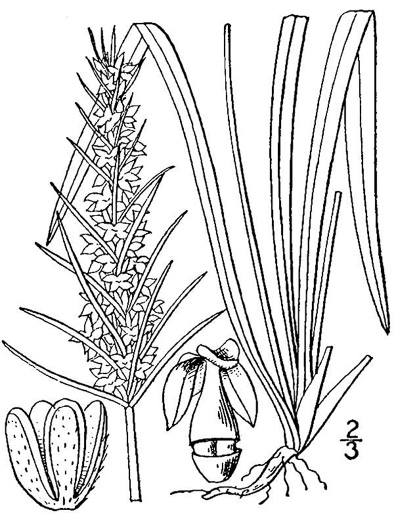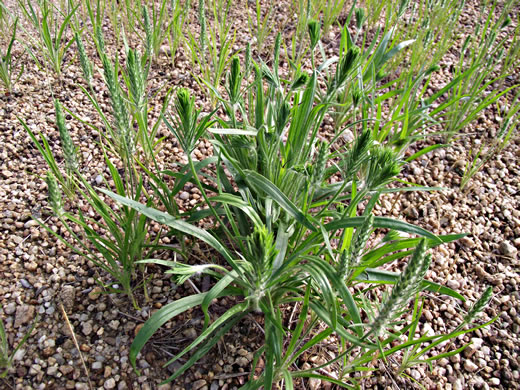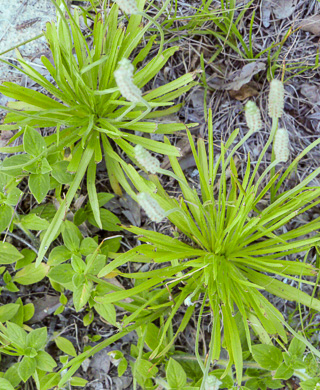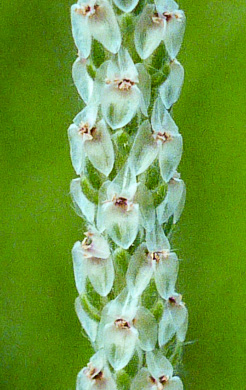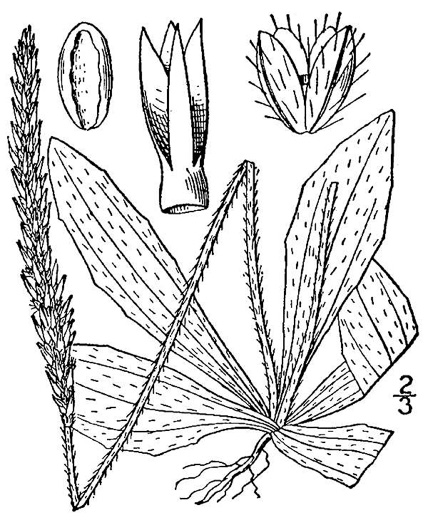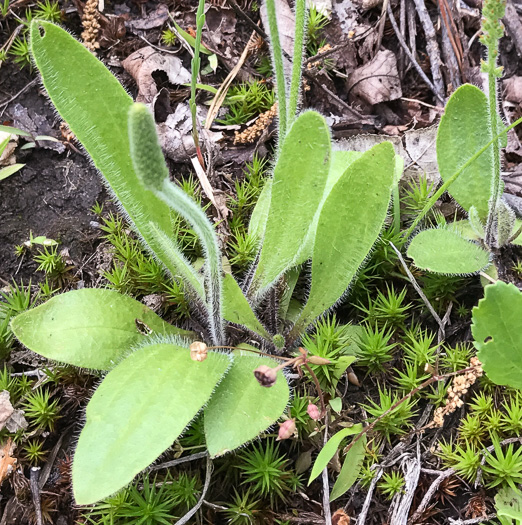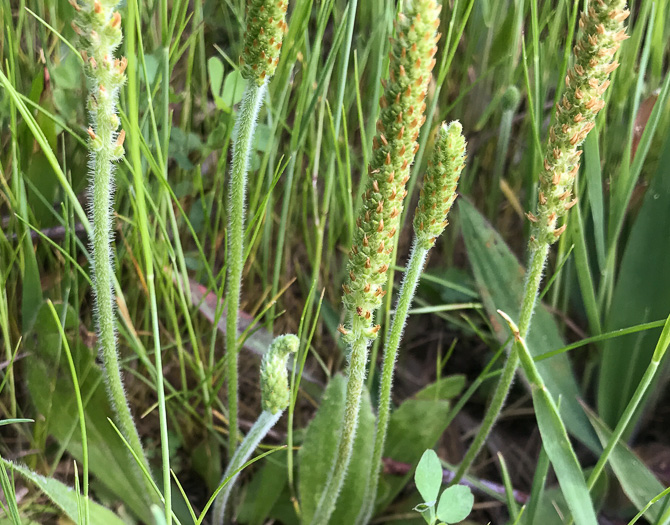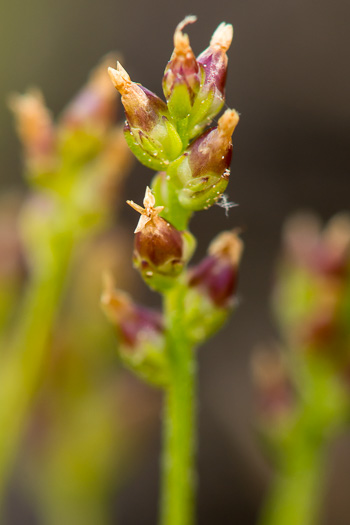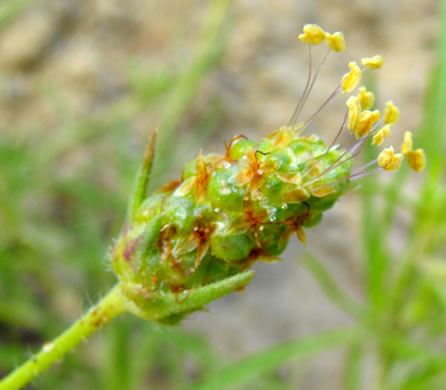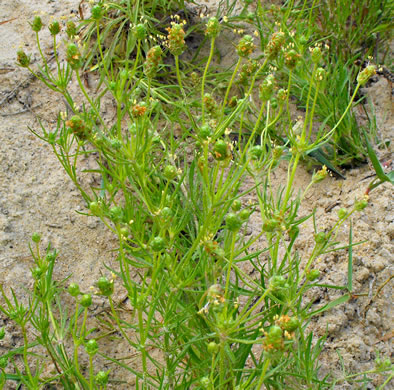Your search found 30 image(s) of Mousetail and Plantain.
To see larger pictures, click or hover over the thumbnails.
To go to the plant's detail page, click its name.
 Habitat: Usually in disturbed areas, such as fields in floodplains
Habitat: Usually in disturbed areas, such as fields in floodplains
Each elongate receptacle (mouse tail) bears one flower at its base, per Wild Flowers of NC, 2nd edition (Justice, Bell, & Lindsey, 2005).
The "mouse tail" will grow up to 6cm long in fruit, per Wild Flowers of NC, 2nd edition (Justice, Bell, & Lindsey, 2005).
 Habitat: Aquatic or semi-aquatic in streambeds with outcrops of slate, limestone, or calcareous clay, and aquatic in tidal estuaries
Habitat: Aquatic or semi-aquatic in streambeds with outcrops of slate, limestone, or calcareous clay, and aquatic in tidal estuaries
Summer and winter leaves dimorphic, spring leaves showing a gradual transition between the two, per Weakley's Flora (2022).
Leaf venation pinnate, some major veins departing midvein well above leaf base, per Weakley's Flora (2022).
Spikes on scapes from plant base, the inflorescences often 1 meter in height, per Weakley's Flora (2022).
 Habitat: Lawns, roadsides, disturbed areas
Habitat: Lawns, roadsides, disturbed areas
Scape solid, terete, erect. Spike 4-22cm long, dense in flower and fruit, per Vascular Flora of the Carolinas (Radford, Ahles, & Bell, 1968).
Lvs glabrous to very pubescent, petioles green (rarely w slight purple tinge), per Vascular Flora of the Carolinas (Radford, Ahles, & Bell, 1968).
 Habitat: Roadsides, lawns, disturbed areas
Habitat: Roadsides, lawns, disturbed areas
Flowers in a dense spike, per Newcomb's Wildflower Guide (Newcomb, 1977).
Sepals narrowly elliptic, 2-4× long as wide (vs. P. major ~1.5× long as wide), per Weakley's Flora.
Well-developed leaves with 5-7 major veins, per Weakley's Flora (2020).
Capsule circumscissile [dehiscing along a transverse circular line like a lid], per Vascular Flora of the Carolinas (Radford, Ahles, & Bell, 1968).
 Habitat: Lawns, roadsides, disturbed areas
Habitat: Lawns, roadsides, disturbed areas
Perennial with a distinctive rosette of leaves, per Weeds of Southern Turfgrasses (Murphy et al., 1992).
Stamens & stigmas well-exserted; stamens mature before the stigmas, per Vascular Flora of the Carolinas (Radford, Ahles, & Bell, 1968).
 Habitat: Sandy and other barren soils, disturbed areas, especially dry, barren, exposed soil, such as clay soils denuded by bulldozing
Habitat: Sandy and other barren soils, disturbed areas, especially dry, barren, exposed soil, such as clay soils denuded by bulldozing
Basal leaves to 8" long are linear or very narrowly elliptic, per Wildflowers of Tennessee (Carman, 2005).
Fruits are 2-seeded capsules, circumscissile near the middle, per Vascular Flora of the Carolinas (Radford, Ahles, & Bell, 1968).
Linear floral bracts to 1" long extend well past the flowers, per Wildflowers of Tennessee (Carman, 2005).
 Habitat: Sandy, rocky, or gravelly prairies and open woodlands; eastwards in on roadsides, lawns, disturbed areas
Habitat: Sandy, rocky, or gravelly prairies and open woodlands; eastwards in on roadsides, lawns, disturbed areas
Leaves of this & P. aristata are linear, those of P. virginica oblanceolate, per Weakley's Flora (2015).
Bracts 0.5-1x long as calyx [vs. longer bracts of P. aristata 8-30mm long], per Weakley's Flora (2015).
 Habitat: Saline marshes, thin soils over rock, roadsides, lawns, disturbed areas
Habitat: Saline marshes, thin soils over rock, roadsides, lawns, disturbed areas
Leaves hairy and petioles purple at base, per Forest Plants of the Southeast and Their Wildlife Uses (Miller & Miller, 2005).
Upper part of the rachis hidden by flowers or fruit, per Vascular Flora of the Carolinas (Radford, Ahles, & Bell, 1968).
 Habitat: Fields, roadsides, disturbed areas
Habitat: Fields, roadsides, disturbed areas
Calyx lobes hyaline margined, equal to or slightly shorter than bracts, per Vascular Flora of the Carolinas (Radford, Ahles, & Bell, 1968).
 Habitat: Disturbed areas
Habitat: Disturbed areas
Densely flowered/fruited spike 0.8-1.8cm long; stamens & stigmas well-exserted, per Vascular Flora of the Carolinas (Radford, Ahles, & Bell, 1968).
Plant usually with opposite branches. Leaves opposite cauline, linear, per Vascular Flora of the Carolinas (Radford, Ahles, & Bell, 1968).

